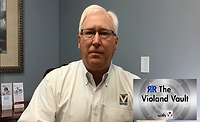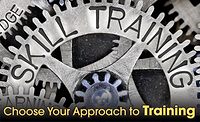Driving Your Organization to Success




Back when I was in high school—before many of you readers were born—our driver’s education course was based on the Smith System® of driving. These five steps to safe operation of a vehicle, the Smith 5 Keys®, were developed in 1952 by Harold Smith as part of our nation’s first professional driver training company, and they remain effective driving guidelines still today. These same keys are also effective as reminders of how critical it is to be thinking of your organization, its structure, your people, and where you are headed in the future. Early in a new year is an appropriate time to consider how these keys can apply to your business.
Get the Big Picture
In driving, the big picture is about looking ahead, seeing where you are going and what is happening around you, and anticipating risks or hazards. Likewise, in business you need to be concerned with where your organization is headed. Your business strategy and annual planning chart the course for how you will compete and the objectives you are focused on accomplishing in the short term. Your organizational structure, the positions you have and the people that occupy them are critical components to your success.
The big picture here refers to looking at what your organizational structure will be in the future. If you are a $2 million business today, what structure is needed for when you have $5 million in revenue? If you are at $10 million headed for $20 million, what key positions need to be added to support that growth? This view out the windshield of your business is one you need to focus on from time to time.
As we cover the additional four keys that make up the Smith System, you’ll learn that your role is to make sure that your people and the organizational structure in which they operate are there to support the continued growth of your business, not hold you back.
Aim High in Steering
One of your responsibilities as the owner or manager in a business is to provide the opportunity for your people to achieve their full potential. For some, this may be the “mission”—the reason for existence—of your business. Evaluating and understanding your people, their goals, dreams, and capabilities is a critical part of motivating your employees. Continually looking for the best fit between the person and the job will help you position your people to succeed. When the regular dialogue you have with those you work with includes asking how they’re doing, what may be holding them back from performing better, and where they see themselves in the future, you have taken a vital step in helping your people and your organization realize their potential.
It is important to note that people reaching their full potential, or achieving their personal goals, may involve them leaving your business. Not every employee you hire will have a long-term career with your organization. Your job is to retain them as long as there is a good fit between the individual and the needs of the business. When that ceases to be the case, then it is in the best interest of both parties to go their separate ways. These situations may nonetheless be examples of people successfully moving toward reaching their potential.
Keep Your Eyes Moving
In driving, as in business, it’s important to always be looking at the vital indicators of how your vehicle is performing. You need to watch for both opportunities and threats or hazards that may keep you from reaching your destination—or business vision—safely. Tools like financial statements, customer feedback, SWOT analysis, competitor assessments, and Michael Porter’s Five Forces model can help you do that for your business as a whole. When it comes to your people, this key means you should always be on the lookout for good people. Like sports teams who draft the best athletes instead of only focusing on players who are suited for a particular position, you are wise to always be open to bringing good people into your organization.
Servers who provide a great customer experience and maintenance, or service providers who display a positive attitude and great work ethic are candidates for your appeal: “You are the kind of person I’m looking for in my business. Would you be interested in coming to work with my company?” Don’t be held back by the fact that you may not be looking to hire anyone at that time. There should always be a place in your organization when the right person comes along.
Leave Yourself an Out
Leaving yourself an out when driving means you don’t put yourself in situations where you can’t avoid an accident caused by the actions of other drivers. The “out” gives you the ability to react and avoid an otherwise dangerous situation. A potentially dangerous situation for your business might be the loss of a key manager or employee. As you develop and promote deserving employees into positions of greater responsibility, their value to the organization increases. The “out” that protects you is succession planning. A vital part of your planning process should be evaluating each key position within your business and identifying who is being groomed as the replacement. This work includes identifying the development needs for the successor and working to address their weaknesses through an ongoing performance appraisal and employee development process.
In some cases, the successor is not present within your current organization. In these situations, it is vital to identify the training, experience, knowledge, and characteristics that are required, and to identify people outside of your business who may be candidates. Staying in contact with such people through business associations and other opportunities will help to facilitate the process when the need arises.
Make Sure They See You
Making sure other drivers can see you and signaling your intentions are among the basics of safe driving. We could relate this to marketing and brand image as it applies to your business, but let’s stay focused on your people. What you want your people to see in you and your business is their future and the opportunities that do, or will, exist for them. As your organization grows, there are more positions and therefore more opportunities for advancement. Developing and communicating career paths to your employees helps them to see that what you are offering is more than just a job; it’s a career. There are positions they can aspire to and work toward.
As business growth or loss of employees creates opportunities, filling the positions from within provides a powerful motivator for those who have goals beyond their current role. Help your people to see what the opportunities are and that you are there to help prepare them to take the next step.
These five keys from the Smith System are based on arriving safely at your driving destination, every time. Using these keys in business to stay focused on your people, their development, and your future organizational needs will help your business to achieve its goals and arrive successfully at your vision.
Looking for a reprint of this article?
From high-res PDFs to custom plaques, order your copy today!









